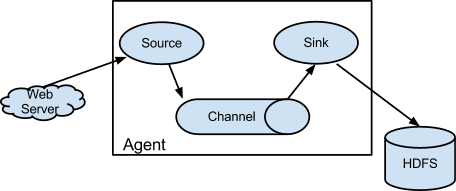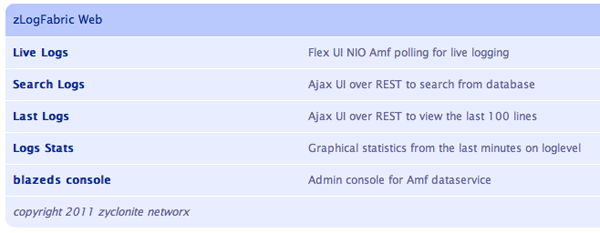The 8 most commonly used Java logging frameworks by Java programmers
As a Java programmer, we have developed many Java applications, including desktop applications, WEB applications and mobile applications. However, the log system is essential for a mature Java application. During the development and debugging stages, logs can help us locate bugs better and faster; during the operation and maintenance stage, the log system can help us record most of the exception information. This will help us better improve the system. This article will share some of the most commonly used Java logging framework components by Java programmers.
1. Log4j – the most popular Java log component
Log4j is an open source log component based on Java. Log4j is very powerful. We can output log information to the console, file, user interface, or to The operating system's event recorder and some system resident processes. What's more worth mentioning is that Log4j allows you to customize the log format and log level very conveniently, which can help developers fully control log information.
Official website: http://logging.apache.org/log4j/2.x/
The following is a simple example of using Log4j:
1 2 3 4 5 6 7 8 9 10 11 12 13 14 15 16 17 |
|
2. gclogviewer – Java log viewing tool
gclogviewer is a tool that supports jdk 6's gc log visualization tool. Compared with gcviewer, gclogviewer supports generating GC trend charts based on gc log, and also supports generating data trend charts required for tuning recommendations.
Official website: http://code.google.com/p/gclogviewer/
3. SLF4J – API-based Java logging framework
SLF4J provides a simple and unified logging interface for developers to configure and deploy You only need to implement this interface to implement the logging function. Logging API implementation can choose to directly implement logging APIs connected to SLF4J such as: NLOG4J, SimpleLogger. Corresponding adapters such as Log4jLoggerAdapter and JDK14LoggerAdapter can also be developed through the API implementation provided by SLF4J.
Official website: http://www.slf4j.org/
4. Flume – Apache log server
What was introduced before are some logging tools. Flume is a log analysis system. Flume is distributed. It has a very flexible architecture for collecting, aggregating and moving large amounts of log data, and provides a reliable and fault-tolerant system architecture.

Official website: http://flume.apache.org/
5. zLogFabric – Log storage system
zLogFabric is an integrated cross-platform logging solution that collects log information storage of each application through the messaging system into a centralized system. The modular design allows the server to store, forward, alert, and generate log statistics.
zLogFabric can collect data from files, syslog, log4j, log4net and Windows events.

Official website: http://www.zlogfabric.com/
6. logstash – Java log management tool
Logstash is a very powerful log management tool. With logstash, you can manage logs Transmit, process, manage and retrieve, and provide a web interface for developers to count and query log information.
Official website: http://www.logstash.net/
7. Commons Logging
The implementation of Commons Logging does not depend on specific logging implementation tools. It only provides some abstract interfaces for logging operations. It encapsulates other logging tools, such as Log4J, Avalon LogKit, and JDK 1.4.
Official website: http://commons.apache.org/proper/commons-logging/
8. Darks Logs
Darks Logs is similar to log4j and is also suitable for Java, Android and other projects, but Darks Logs is easier to use , and made great improvements to the Android side. Darks Logs adds an Appender to Sqlite log storage. It aims to solve the problem that Android logs cannot flexibly control common operations such as log level, format, save or display target, etc.
Official website: https://github.com/liulhdarks/darks-logs

Hot AI Tools

Undresser.AI Undress
AI-powered app for creating realistic nude photos

AI Clothes Remover
Online AI tool for removing clothes from photos.

Undress AI Tool
Undress images for free

Clothoff.io
AI clothes remover

Video Face Swap
Swap faces in any video effortlessly with our completely free AI face swap tool!

Hot Article

Hot Tools

Notepad++7.3.1
Easy-to-use and free code editor

SublimeText3 Chinese version
Chinese version, very easy to use

Zend Studio 13.0.1
Powerful PHP integrated development environment

Dreamweaver CS6
Visual web development tools

SublimeText3 Mac version
God-level code editing software (SublimeText3)

Hot Topics
 1393
1393
 52
52
 1207
1207
 24
24
 Perfect Number in Java
Aug 30, 2024 pm 04:28 PM
Perfect Number in Java
Aug 30, 2024 pm 04:28 PM
Guide to Perfect Number in Java. Here we discuss the Definition, How to check Perfect number in Java?, examples with code implementation.
 Weka in Java
Aug 30, 2024 pm 04:28 PM
Weka in Java
Aug 30, 2024 pm 04:28 PM
Guide to Weka in Java. Here we discuss the Introduction, how to use weka java, the type of platform, and advantages with examples.
 Smith Number in Java
Aug 30, 2024 pm 04:28 PM
Smith Number in Java
Aug 30, 2024 pm 04:28 PM
Guide to Smith Number in Java. Here we discuss the Definition, How to check smith number in Java? example with code implementation.
 Java Spring Interview Questions
Aug 30, 2024 pm 04:29 PM
Java Spring Interview Questions
Aug 30, 2024 pm 04:29 PM
In this article, we have kept the most asked Java Spring Interview Questions with their detailed answers. So that you can crack the interview.
 Break or return from Java 8 stream forEach?
Feb 07, 2025 pm 12:09 PM
Break or return from Java 8 stream forEach?
Feb 07, 2025 pm 12:09 PM
Java 8 introduces the Stream API, providing a powerful and expressive way to process data collections. However, a common question when using Stream is: How to break or return from a forEach operation? Traditional loops allow for early interruption or return, but Stream's forEach method does not directly support this method. This article will explain the reasons and explore alternative methods for implementing premature termination in Stream processing systems. Further reading: Java Stream API improvements Understand Stream forEach The forEach method is a terminal operation that performs one operation on each element in the Stream. Its design intention is
 TimeStamp to Date in Java
Aug 30, 2024 pm 04:28 PM
TimeStamp to Date in Java
Aug 30, 2024 pm 04:28 PM
Guide to TimeStamp to Date in Java. Here we also discuss the introduction and how to convert timestamp to date in java along with examples.
 Java Program to Find the Volume of Capsule
Feb 07, 2025 am 11:37 AM
Java Program to Find the Volume of Capsule
Feb 07, 2025 am 11:37 AM
Capsules are three-dimensional geometric figures, composed of a cylinder and a hemisphere at both ends. The volume of the capsule can be calculated by adding the volume of the cylinder and the volume of the hemisphere at both ends. This tutorial will discuss how to calculate the volume of a given capsule in Java using different methods. Capsule volume formula The formula for capsule volume is as follows: Capsule volume = Cylindrical volume Volume Two hemisphere volume in, r: The radius of the hemisphere. h: The height of the cylinder (excluding the hemisphere). Example 1 enter Radius = 5 units Height = 10 units Output Volume = 1570.8 cubic units explain Calculate volume using formula: Volume = π × r2 × h (4
 Create the Future: Java Programming for Absolute Beginners
Oct 13, 2024 pm 01:32 PM
Create the Future: Java Programming for Absolute Beginners
Oct 13, 2024 pm 01:32 PM
Java is a popular programming language that can be learned by both beginners and experienced developers. This tutorial starts with basic concepts and progresses through advanced topics. After installing the Java Development Kit, you can practice programming by creating a simple "Hello, World!" program. After you understand the code, use the command prompt to compile and run the program, and "Hello, World!" will be output on the console. Learning Java starts your programming journey, and as your mastery deepens, you can create more complex applications.




